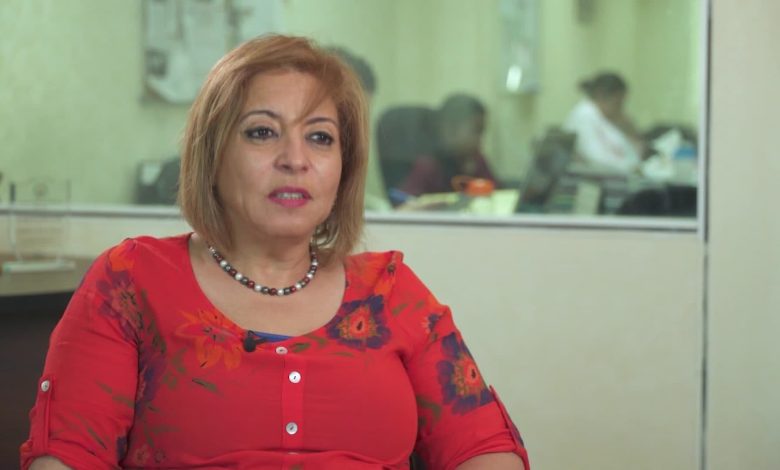
By : Nedal Zubeidi
Jordan Daily – As Jordan continues to address challenges facing migrant workers, refugees, and survivors of human trafficking, Tamkeen for Legal Aid and Human Rights remains at the forefront of advocacy and protection efforts. With growing national focus on fair labour practices and stronger legal safeguards, the organization’s role has become increasingly vital.
In this Jordan Daily interview, Executive Director Linda Kalash discusses the key gaps that still leave many workers vulnerable, the reforms needed to enhance protection, and recent progress in combating exploitation and human trafficking in the Kingdom.
JD – In your view, despite ongoing advocacy by Tamkeen for the rights of migrant workers, refugees, and victims of human trafficking, what are the most pressing gaps that still need to be addressed in Jordan’s protection systems and legal frameworks?
Linda Kalash: Although progress has been made in several protection pathways, significant legislative and implementation gaps remain and require urgent attention to ensure effective protection for migrant workers and refugees in Jordan. One of the most critical challenges is the lack of harmonization among existing laws and regulations- and, in some cases, their contradictions- which leaves a wide segment of migrant workers and refugees vulnerable to violations that may, in certain cases, amount to indicators of human trafficking.
The Labour Law delegates key aspects of migrant workers’ rights to secondary regulations and instructions, some of which impact fundamental rights such as freedom to choose employment and the ability to change employers without undue restrictions. In practice, worker dependency on employers remains intact. Although no formal “kafala” system is enshrined in legislation, administrative requirements effectively recreate it by mandating prior employer approval for changing jobs or even for travel. This dependency places workers in a position of heightened vulnerability and opens the door to exploitative practices such as passport confiscation, restriction of movement, or coercive working conditions.
Additional gaps include limited inclusion of migrant workers and refugees in social protection systems- particularly access to social security and health insurance- especially in informal sectors and domestic work. Early identification mechanisms for potential trafficking victims also remain insufficient.
Access to justice continues to be compromised by high legal costs, lengthy labour dispute processes, lack of translation services, fear of retaliation, and other barriers. Moreover, labour inspection mechanisms remain weak in the most vulnerable sectors, including domestic work and agriculture.
Ensuring fair and comprehensive protection requires strengthening the implementation of existing legislation, amending regulations that restrict workers’ freedom and reinforce dependency, raising legal awareness among workers in their own languages, and enhancing inspection and monitoring systems.
JD – You recently called for the establishment of a national observatory to combat human trafficking. How could such an observatory contribute to improving national policies, and what challenges might arise in creating it?
Linda Kalash: The call for a national anti-trafficking observatory stems from a genuine need to strengthen the country’s capacity to analyze, monitor, and respond to trafficking trends in a timely and effective manner. An observatory is more than a research platform- it is a strategic mechanism that enables policymakers to develop evidence-based strategies and address existing gaps that continue to hinder prevention and protection efforts.
If established, the observatory would provide a comprehensive, accurate, and regularly updated national database on trafficking cases, reports, and referral pathways- an essential resource that is currently lacking. The absence of consistent, up-to-date data complicates government planning and institutional response. With reliable data, the observatory could issue periodic reports and analytic briefs identifying high-risk groups, sectors with elevated exploitation patterns, and trends that require immediate intervention.
It would also strengthen early-warning systems by monitoring indicators of potential trafficking in workplaces and other vulnerable settings, enabling authorities to intervene before cases escalate or become systematic. Furthermore, the observatory could support legislative and policy reform by providing data-driven analysis highlighting legal and regulatory gaps that require amendment or enhanced enforcement.
In addition, the observatory would serve as a national coordination platform, aligning documentation methodologies and facilitating information exchange between government agencies and civil society. This alone could significantly reduce fragmentation in responses and enhance the effectiveness of interventions.
However, establishing the observatory will not be without challenges. Key among them is the difficulty of data sharing among government entities due to the absence of unified documentation methodologies. Overcoming this requires clear political will and a legal framework that defines the observatory’s mandate, authority, and independence. Securing sustainable funding, ensuring adequate human and technological resources, and implementing robust data protection and privacy safeguards- especially to protect victims- are also essential.
JD – Many victims do not realize that what they are experiencing may fall under the crime of human trafficking. What strategies does Tamkeen use to raise awareness among the most vulnerable groups, particularly domestic workers and irregular workers?
Linda Kalash: At Tamkeen, we place strong emphasis on awareness-raising because many victims do not recognize that the violations they face may constitute human trafficking, nor do they always know that they have rights they can assert. We therefore work systematically to educate workers, community members, and vulnerable groups about their rights and obligations, common patterns of abuse, forms of exploitation that may amount to trafficking, and how to access protection and support services.
We use simplified, multilingual educational materials, short targeted videos, and on-site awareness sessions conducted in workers’ communities and workplaces to ensure broad reach. We also hold meetings and community engagement sessions to provide accurate legal information that helps workers understand their status and strengthens their ability to protect themselves against exploitation or unlawful pressure.
JD – You mentioned recently that excluding migrant workers from social security and health insurance systems increases their vulnerability. What policy and legislative changes do you consider necessary to ensure effective protection for these workers?
Linda Kalash: It is important to clarify that, in principle, the social security system in Jordan covers both Jordanian and non-Jordanian workers. Migrant workers are not legally excluded. However, the practical ability of certain groups of workers to benefit from this protection remains constrained by requirements that limit their actual access- most notably the need for a valid work permit and employer-based registration with social security.
Here lies the core issue: many workers lose their work permits or are unable to renew them due to an employer’s negligence or refusal- not because of the worker. As a result, they are unable to demonstrate legal employment during the contribution period, which may deprive them of their entitlements unless they pay financial penalties or wait for periodic regularization windows. In both cases, the worker bears the consequences of the employer’s failures, either financially or through delayed access to benefits, which deepens their vulnerability.
A further gap is that the inclusion of domestic workers- who are among the most vulnerable groups- remains dependent on a Cabinet decision rather than being anchored in binding legislation. This leaves their access to social security subject to administrative considerations rather than guaranteed legal protection.
From Tamkeen’s perspective, ensuring effective protection requires several reforms: enshrining the inclusion of all migrant workers under social security in clear legal provisions without restrictive conditions that hinder access, expediting a government decision to grant full social security coverage to domestic workers, and introducing mechanisms that prevent workers from losing their entitlements due to employer negligence.
JD – What are the most notable positive developments or indicators of progress you have observed recently in combating forced labour and human trafficking in Jordan?
Linda Kalash: Despite persistent challenges, we have observed several positive developments in recent years that reflect meaningful progress in combating forced labour and human trafficking in Jordan. These include continuous improvements to the legislative framework, growing institutional awareness of the need to align national laws with international standards, and strengthened labour inspection capacities- particularly in high-risk sectors such as agriculture. We have also seen enhanced referral procedures and increased cooperation between government entities and civil society organizations.
One of the most significant positive indicators is the advancement of the legal and institutional framework. Amendments to the Anti- HumanTrafficking Law in 2021 introduced stricter penalties to enhance prevention and deterrence. In 2023, amendments to the Shelters for Victims and Persons affected by HumanTrafficking Offences improved protection and care services, and the Anti-Human Trafficking Victims Assistance Fund Regulation was issued the same year. A memorandum of understanding was also signed with the Bar Association to provide free legal consultation to victims. Combined with expanded collaboration with international partners to build institutional capacities, these developments represent tangible progress in addressing forced labour and human trafficking and in strengthening protection for vulnerable groups.

